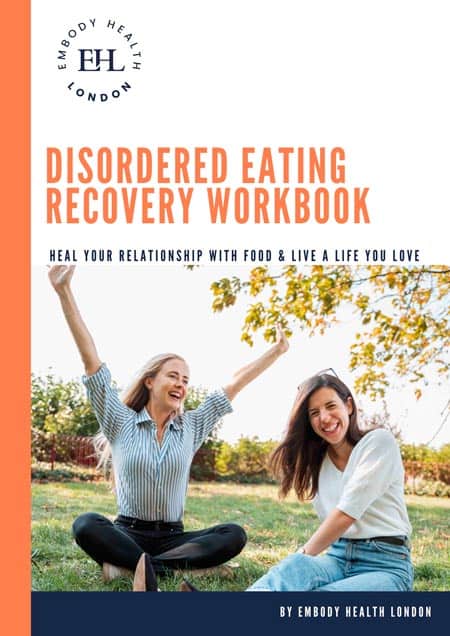Blog

How the fitness industry erodes your self-worth
The Thin-Ideal in Athleisurewear – Fitspo, the Feminine Ideal and Body Image Issues
The weight of diet-culture weighs heavier on our shoulders than any barbel ever could.
It causes us to sink lower than any squat and leaves us more (internally) contorted than any yoga pose.
The anxiety caused by the consumption of ‘cheat’ foods many leave us sweating more than a HIIT session.
We may seek to run a 10K marathon in order to put as many miles as possible between ourselves and the mirror that doesn’t reflect the body society wishes to see.
You earn your body.
Your body is your slave. It works for you.
And yet it isn’t singularly our bodies that are enslaved – we are enslaved, body and mind, to a new normative female body image developed within the sphere of fitspo.
The same social media fitness sphere which gave rise to the quotes above, which suggests that bodies are not something which we embody but something to be earnt, to be enslaved, to be bent to the point of breaking.
Fitspo and the ‘New’ Feminine Ideal
With approximately 66.3 K, 18.9 million, and 72 million hash tagged posts (at the time of writing) on Instagram respectively, it seems redundant to state that ‘fitness inspiration’ or ‘fitspiration’ / ‘fitspo’ is just a popular health trend on social media. Given that most users post images, quotes, workouts / fitness tips and nutrition advice under this label, this content both shapes the online fitness culture as well as shaping the new idealised female physique.
Initially, the shift from the previously revered thin ideal to a focus on fitness may seem positive, and has helped in reduce the stigma around female weightlifting and muscle building Raggat, M et al. 2018, p.6), yet the “fitness ideal” is still founded on the ideal of aesthetic perfection and is exclusionary in nature.
Strong isn’t necessarily #thenewskinny, as the traditional thin ideal just seems to have shifted to emphasize both fitness and slimness/ thinness (Ibid) as the new #bodygoal(s). The most commonly represented idealised image for women within the fitness sphere appears to a look that cultivates leaness (i.e. ‘toned’), well defined muscles, and relatively minimal body fat.
The fit-ideal is, fundamentally, diet culture’s darling the thin-ideal dressed up in athleisure wear.
Studies have even gone so far to demonstrate that women exposed to thin-athletic models show greater levels of body dissatisfaction versus the traditional thin ideal (Alberga, A et al. 2018, p.2)
With near enough 45% of fitspo or post-workout images posted posed and/or manipulated to make the individual’s body appear thinner or smaller than reality, this suggests that there is a concerning emphasis on thinness and attractiveness as the motivation and reward for exercise.
Aesthetics or Athletics?
A content analysis of fitspiration images on social media suggest that these types of posts often place a greater emphasis on appearance and attractiveness as opposed to health, fitness, or improved athleticism as a reason to engage in “fitness behaviours” (Alberga et al. 2018).
Approximately 53% of social media users, within a 2018 survey, reported that they accessed fitness content to inspire them to exercise in order to improve and/or alter their appearance and lose weight (Raggat, M et al, p.3), with health and wellness being secondary or a by-product of attaining an idealised physique. Many of the participants agreed that the images portrayed a goal body – or a benchmark for comparison and therefore an external means to measure their success or failure (Raggat, M et al. 2018, p.6)
Exercising for aesthetics has been associated with a more negative body image, with acute exposure to fitspo images increasing body dissatisfaction and an underlying sense of inadequacy (Ibid, pp. 2-6)
Many women stated that they needed to be “better” or “stronger” or “fitter” than they currently were, and self-reported themselves to be failures for not having attained their desired goal when comparing their progress to fitness influencers or others on social media (Ibid, p. 7)
Despite fitness content often increasing users’ intent to improve their fitness or set self-improvement goals, it has also been shown to increase the desire for (unattainable) thinness, and decrease appearance based self-esteem and body-satisfaction / acceptance (Alberga, A et al. 2018, p.2).
An overt preoccupation with modifying physical appearance through exercise may exist on a continuum from health improving behaviours (e.g. improving cardiovascular fitness, movement for mental health, exercise for general wellbeing) to pathological manifestations of anxiety – encompassing image-based obsessive-compulsive disorders such as Body Dysmorphic Disorder (BDD), Muscle Dysmorphia, and associated clinical conditions such as eating disorders, mood disorders, and substance abuse (Nazarali, S and Majumdar, A. 2020, p.1)
Conversely, those who didn’t engage with fitspirational content were reported to be more motivated by health concerns (Ibid).
Burn to Earn
As well as potentially promoting physical activity as a purgatory exercise to exorcise body-fat, fitspiration content may also promote a disordered relationship with food.
Accordingly, research concludes that users’ liking or following #fitspo content on social media are more likely to misuse detox products, abuse diet pills (Raggat, M et al. 2018, p.2). and engage in restrictive eating – such as the relatively renowned “clean eating” trend.
Frequent exposure to physique-based fitness content, moreover, predicted both anorexic and bulimic tendencies (Homan, K. pp.241-42), with data obtained from a residential treatment centre for eating disorders demonstrates that patients showed a greater internalization (i.e. endorsement) of the thin-athletic ideal (Ibid.)
Further evidence suggests that, in regards to fitspo and eating disturbances, that the potentially excess quantity of exercise undertaken as a compensatory method or a means to obtain an idealised physique is not the issue per se, but the negative emotions and intense feelings of guilt and shame tied to missing an exercise session. These negative associations and compulsive exercise based on appearance and weight-loss related goals are strongly linked to disordered eating behaviours and self-destructive binge-restrict cycles (Ibid).
(Re) Building the Body and Body Image Satisfaction
Fitspiration content more often than not contains objectifying images – you don’t need to scroll all too far down to find photos of disembodied body parts – abs and perfectly pert peaches filling up squares on our Instagram grids.
Our everyday lives and self-perception should not be founded on the premise of virtual self-dismemberment the mirror.
Shifting the focus to incorporate the idea of body functionality as well as form – that may equate to focusing more so on the weight on your barbel as opposed to your weight on the scales. It is through becoming more aware of the capacity of our bodies and performance–performance based goals that we can move away from simply self-objectifying and reducing ourselves to just a “body”.
It isn’t the act (i.e. exercise and fitness pursuits) in itself that is inherently negative, but the intent that determines whether it is an act of self-love and falls on the spectrum of being an adaptive appearance investment (i.e. enhancing appearance for yourself instead of fitting an ideal) or an act of self-punishment born of comparison.
The weight we need to lose isn’t always on our bodies, but the weight of self and socially imposed body-expectations and comparisons. If only we sought to flex our muscles for self-love and self-compassion as often as those on our bodies.
Wil having those visible abs help you better like yourself as a whole person or just earn you Instagram likes?
Fitspo Fundamentals –
- The thin-athletic ideal presented on social media via fitspo has been shown to elicit greater body-dissatisfaction versus exposure to the traditional thin-ideal
- Fitspo prioritises appearance-based goals over health goals. Achieving these physical goals is portrayed as a reward for exercise.
- Exercising for aesthetics is associated with more negative body image and instils an underlying sense of inadequacy and failure.
- Fitness inspiration may increase instances of appearance-based obsessive-compulsive disorders and disordered eating practices.
- Shifting focus to functionality over aesthetic form and treating exercise and eating as an act of self-love and self-care/ a health fostering practice may aid in combatting negative body-image.
If you would like to learn how to better perform body-image push-ups and sprint away from the constraints of diet-culture, and shimmy towards self-love please drop and give us 20 (or just one) email(s) at [email protected]
Charlotte Munro, BSc
EHL Team x
References
‘Cheat Day’ (2020), Available at: https://www.lexico.com/definition/cheat_day (Accessed 10/11/2020)
Alberga, A et al. (2018), ‘Fitspiration and Thinspiration: A Comparison Across Three Social Networking Sites’, Journal of Eating Disorders, 6(39), pp. 1-10. doi: 10.1186/s40337-018-0227-x
Badenes-Ribera, L et al. (2019), ‘The Association Between Muscle Dysmorphia and Eating Disorder Symptomatology: A Systematic Review and Meta-Analysis’, Journal of Behavioural Addictions, 8(3), pp. 351-371. doi: 10.1556/2006.8.2019.44
Carrotte, E et al. (2017), ‘“Fitspiration” on Social Media: A Content Analysis of Gendered Images’, Journal of Medical Internet Research, 19(3). doi: 10.2196/jmir.6368
Corazza, O et al. (2019), ‘The Emergence of Exercise Addiction, Body Dysmorphic Disorder, and other Image Related Psychopathological Correlates in Fitness Settings: A Cross Sectional Study’, PLOS One, pp.1-17. doi: /10.1371/journal.pone.0213060
Homan, K (2010), ‘Athletic-ideal and Thin-ideal Internalization as Prospective Predictors of Body Dissatisfaction, Dieting, and Compulsive Exercise’, Body Image, pp. 240-245. doi:1 0.1016/j.bodyim.2010.02.004
Leone, J et al. (2005), ‘Recognition and Treatment of Muscle Dysmorphia and Related Body Image Disorders’, Journal of Athletic Training, 40(4), pp. 352-359.
Nazarali, S and Majumdar, A. (2020), ‘Exploring the Effects of ‘Fitspiration’ and Pressure from Social Media on Body Dissatisfaction and Exercise Motivation in Male and Female Viewers in the UK’, Proceedings of the Nutrition Society, 79 (OCE3). doi: 10.1017/S002966512000779X
Pope, H et al. (1997), ‘Muscle Dysmorphia: An Underrecognized Form of Body Dysmorphic Disorder’, Psychosomatics, 38(6), pp. 548-577, doi: 10.1016/S0033-3182(97)71400-2
Raggatt, M et al. (2018), ‘I Aspire to Look and Feel Healthy Like the Posts Convey”: Engagement with Fitness Inspiration on Social Media and Perceptions of its Influence on Health and Wellbeing’, BMC Public Health, 18(1002), pp. 1-11. doi: 10.1186/s12889-018-5930-7
Tiggeman, M and Zaccardo, M (2018), ‘’Strong is the New Skinny’: A Content Analysis of #fitspiration Images on Instagram’, Journal of Health Psychology, 23(8), pp.1003-1011. doi: 10.1177/1359105316639436
Wicklund, M et al. (2019), ‘‘Strong is the New Skinny’: Navigating Fitness Hype Among Teenagers in Northern Sweden’, Sport, Education and Society, pp. 441-454. doi: 10.1080/13573322.2017.1402758













